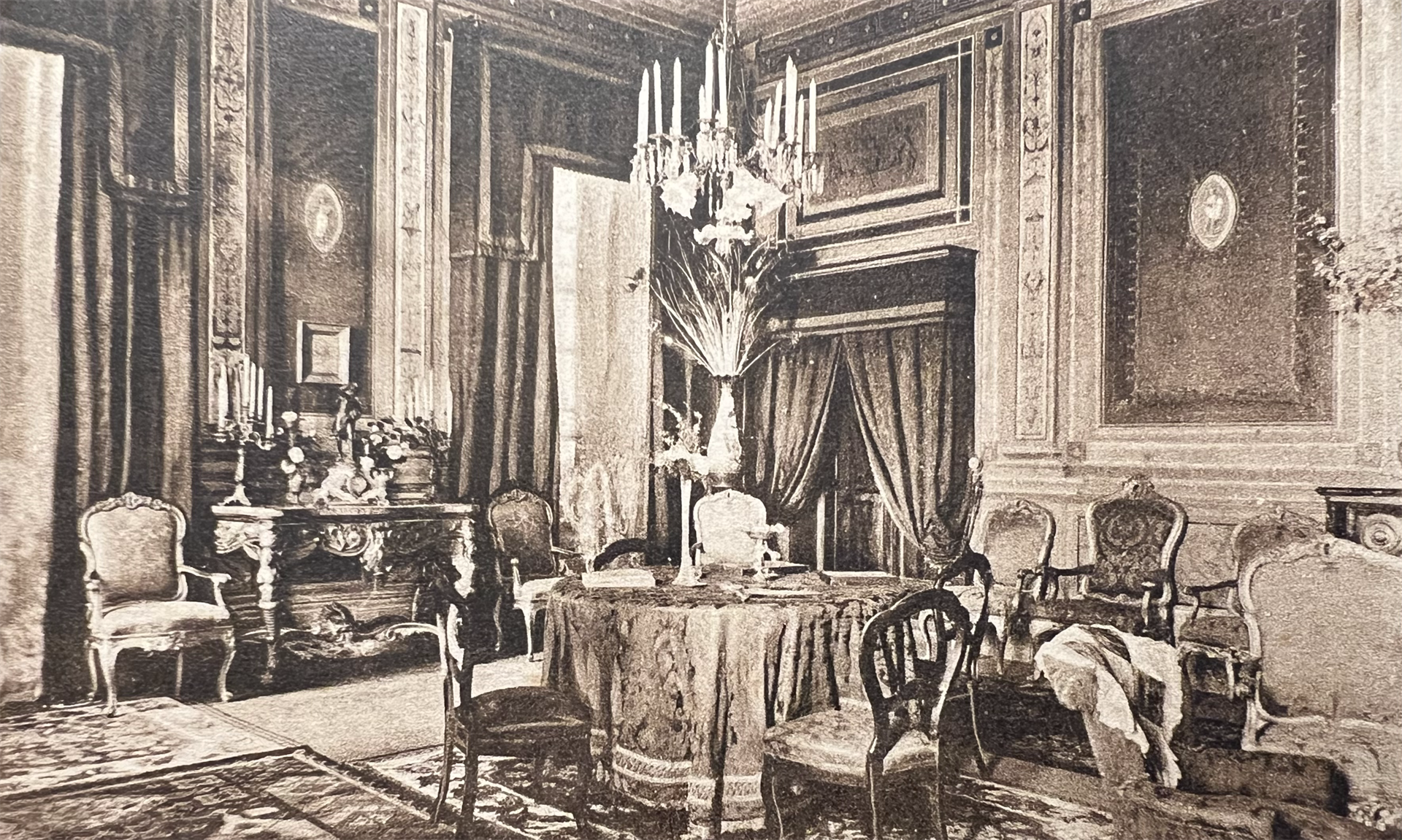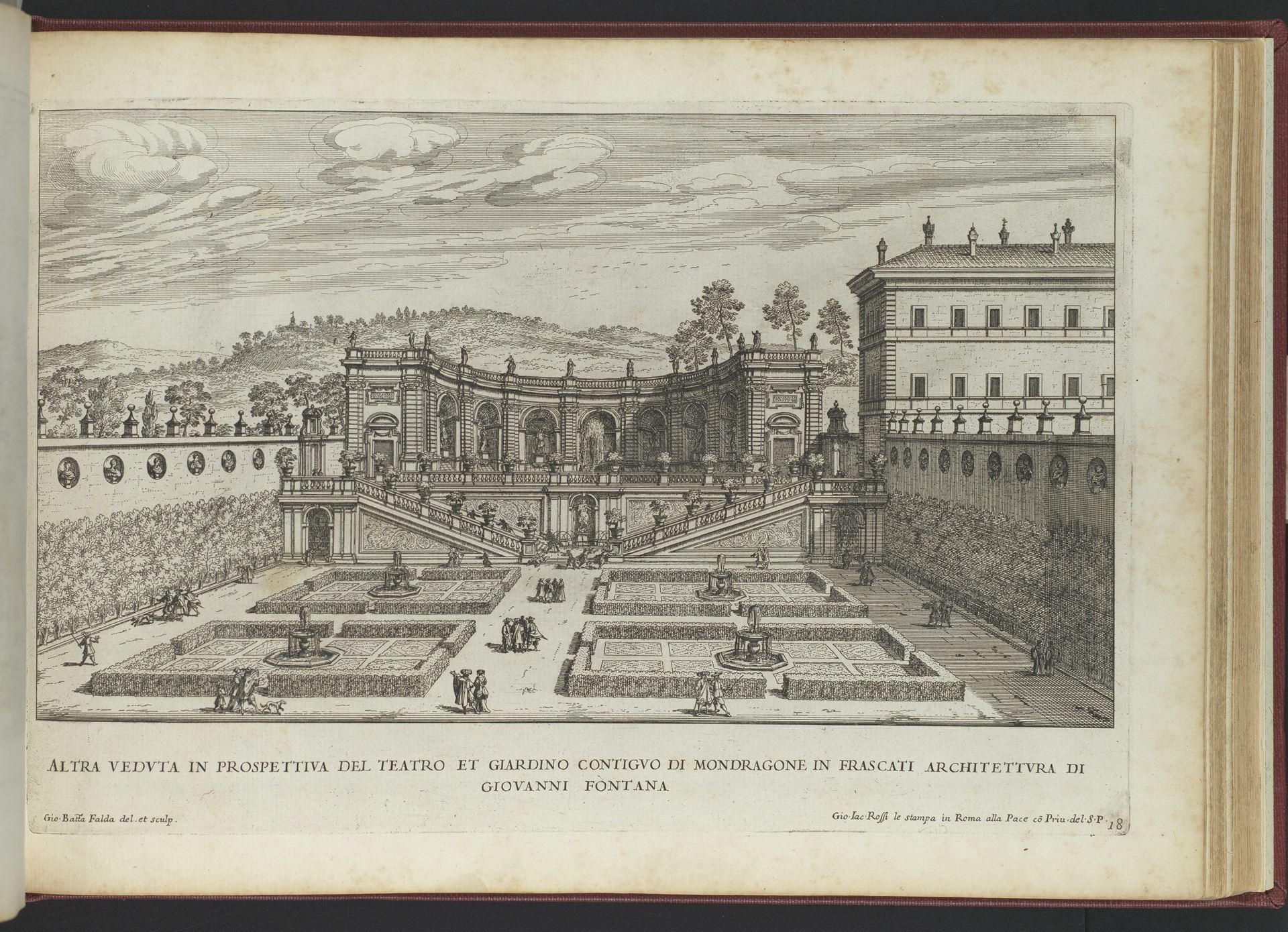The Society for the History of Collecting
are pleased to invite you on
Monday 29 May at 7pm (CET); 6pm (BST)
for a Zoom lecture delivered by
Flavia De Nicola on the topic of
The Borghese collection at Villa Mondragone in the Seventeenth- and Eighteenth- Century: transfers of art and power between Rome and the Tusculan hills

Interior view of the Red Hall of Villa Mondragone, second half of the 19th Century (?), Fototipia Alterocca – Terni, n. 41539.

Villa Mondragone, Frascati, view of garden and semi-circular water theater, from “Le Fontane delle Ville di Frascati nel Tusculano con li Loro Prospetti”, plate 18 of part 2, etcher: Giovanni Battista Falda, (1643 – 1678), publisher: Giovanni Giacomo De Rossi (1627 – 1691), 1691 or after, etching (27.9 x 40.4 x 3.4) cm, New York, The Metropolitan Museum of Art, Gift of D. W. Langton, transferred from the Library, accession number: 1991.1073.145(34–51).
ABSTRACT: This lecture will present an analysis of the collection of paintings and sculptures that the Borghese family displayed at Villa Mondragone on the Tusculan hills, in Rome countryside, in the 17th and 18th Centuries. It will explore how the variable contents and set-up of the art collection reflected the family’s intentions of self-representation of their power.
Basing on unpublished archival documents, primary sources, and a new comprehensive comparison among the Borghese collection inventories, it is possible to identify the pieces once on display at Villa Mondragone, which are currently still housed at the Galleria Borghese, scattered around international museums or dispersed. By focusing on the main patrons of the Borghese family, the change of the collection contents can be traced, especially according to the Cardinal Scipione Caffarelli Borghese’s (1577 – 1633) and the Prince Marcantonio IV Borghese’s (1730 – 1800) respective visions.
The transfers of the Borghese collection pieces between the collecting seats of the family inside and outside Rome, such as Palazzo Borghese in Campo Marzio, Villa Borghese fuori di Porta Pinciana, and Villa Borghese di Mondragone, serve as signposts, indicating the connection between the family’s collecting projects on one hand, and their political, economic and social projects on the other.
SPEAKER’S BIOGRAPHY: Flavia De Nicola is PhD candidate on the Borghese’s collection and patronage at Villa Mondragone between 1613 and 1865 at the University of Rome Tor Vergata, where she is also Cultore della Materia in Early Modern Art History. Her interests include the history of collecting, as well as the research, inventory and documentation of museum collections, developed at the Vatican Museums (2019-2020), the Ecole du Louvre (2012), and on which she participated in the 67th Annual Meeting of the Renaissance Society of America (2021), and in an interdisciplinary research project at ENEA National Agency (2012). Since 2014, she has been co-founder and author of Milestone Rome art project.
TO REGISTER FOR THE EVENT CLICK HERE
